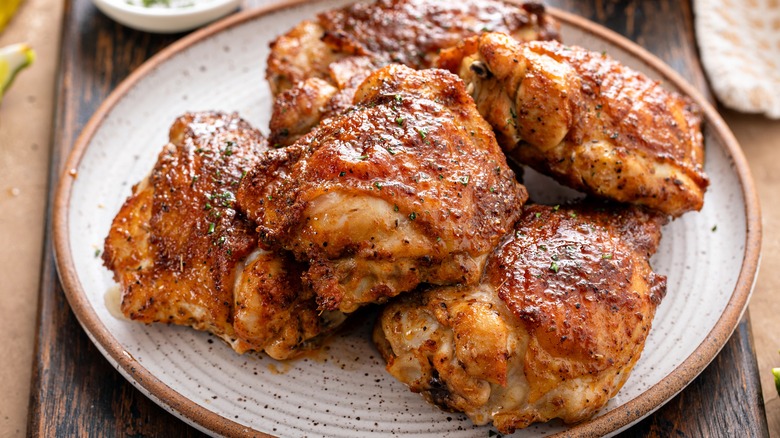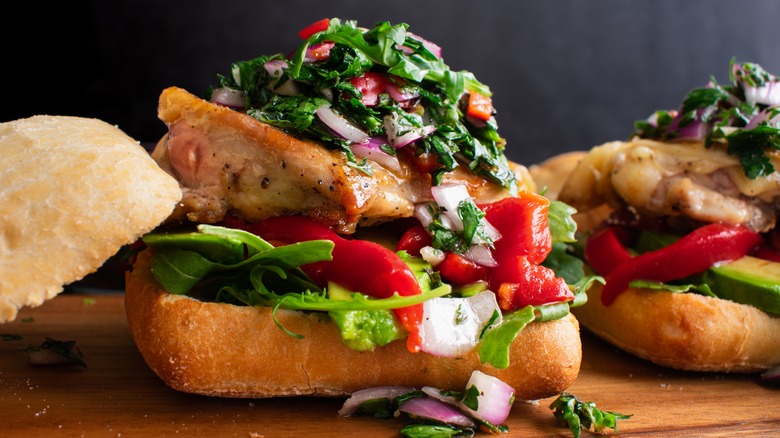Why An Expert Thinks Chicken Thighs Make The Juiciest Sandwiches
Chicken features in countless recipes for good reason. It's an incredibly versatile meat that goes beautifully with so many flavors. There are endless ways to prepare it, from roasting to baking to frying. However, if you're looking to craft a mouthwatering chicken sandwich, that versatility can be a little intimidating as you try to figure out exactly which cut of chicken to use and how you should prepare it. Luckily, we've tapped sandwich expert Max Halley, to guide you. In an exclusive interview with Mashed, Halley — the author of "Max's World of Sandwiches" — explains exactly why thigh meat is key if you're looking for the juiciest sandwiches possible.
"The chicken thigh is a forgiving piece of meat," says Halley. "If you're going to be deep frying, roasting for a long time or braising and shredding the meat down, thigh meat will stay juicy for longer than breast ever will and let you get away with murder." That's right — not only will it make your sandwich taste better, but it'll also give you a bit of wiggle room with your preparation. If your chicken thighs aren't entirely uniform in size and consequently need slightly different amounts of time to cook, an extra couple of minutes won't dry out the smaller thighs the way it would smaller chicken breasts. Plus, as Halley indicates, you can use thighs to make everything from crispy fried chicken sandwiches to creamy chicken salad sandwiches with pulled chicken.
Cooking tips for the juiciest chicken
Whether you're roasting your chicken, pan-searing it, or tossing it in the air fryer, there's just one thing you should keep in mind for best results — you want that temperature relatively high, according to Max Halley. "Tenderness and juiciness in a chicken thigh is brought about by keeping it at a higher temperature for a more sustained period than it is with chicken breast. That's all you need to remember really," instructs Halley. If achieving that perfect crispness on the exterior is as important to you as avoiding a dry chicken sandwich, you'll also want to start the meat skin-side down for maximum crispness if you're broiling, grilling, or pan searing, and skin-side up if you're baking it — you basically want the heat to really blast the skin to crisp it up. And, while it's always a matter of preference, try to avoid the mistake of choosing boneless or skinless thighs as they simply don't have as much flavor.
The chicken is undoubtedly the most important part of a great chicken sandwich, and Halley's tips will help you achieve juicy perfection. However, that doesn't mean you should ignore the other components. We've got a few tips for cooking chicken sandwiches at home that might be helpful, from toasting the bread or buns to playing around with fun sauces, that can really level up your meal.

